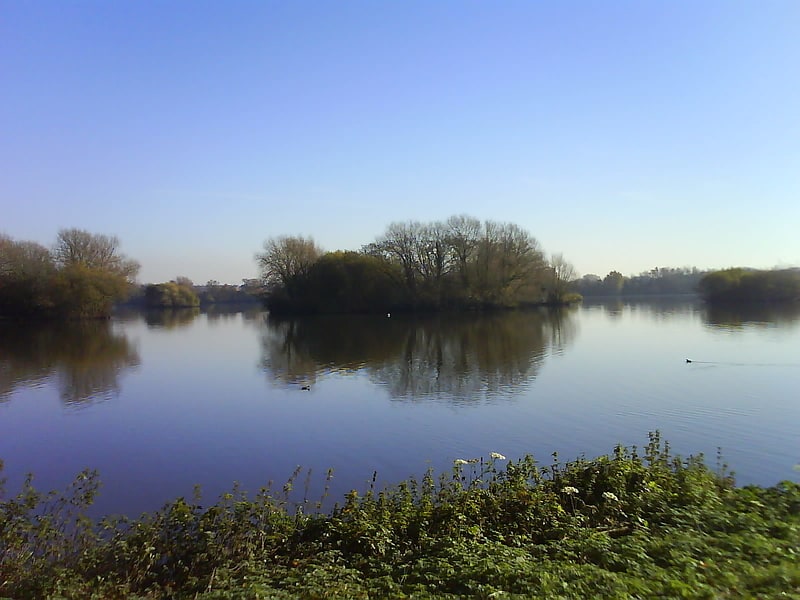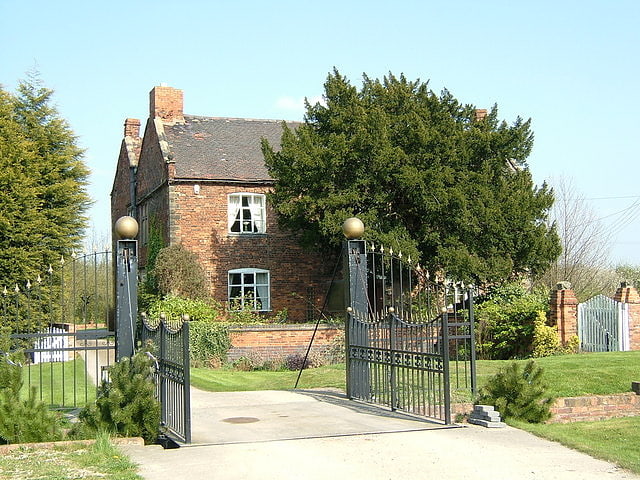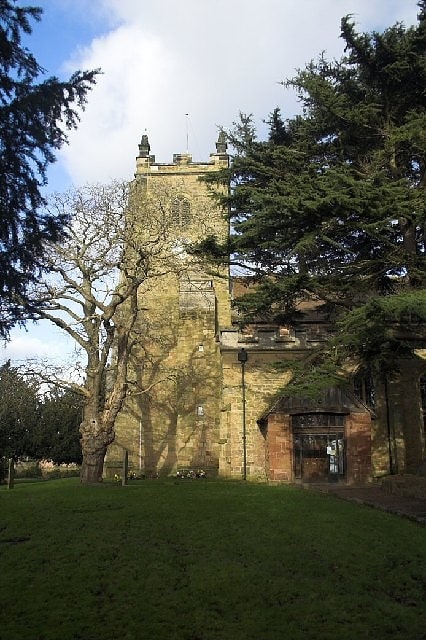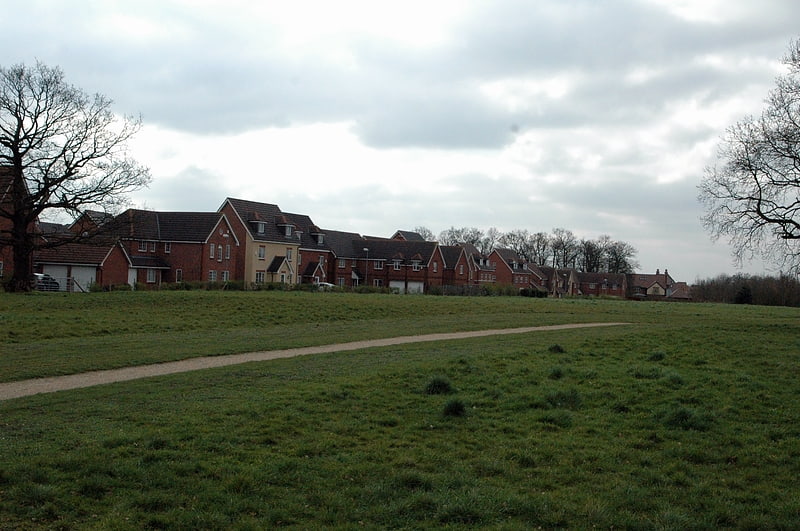Discover 6 hidden attractions, cool sights, and unusual things to do in Kingsbury (United Kingdom). Don't miss out on these must-see attractions: Kingsbury Water Park, Peddimore Hall, and Church of St Peter & St Paul. Also, be sure to include New Hall Estate in your itinerary.
Below, you can find the list of the most amazing places you should visit in Kingsbury (England).
Table of Contents
Kingsbury Water Park

Country park in England. Kingsbury Water Park is a country park in north Warwickshire, England, not far from Birmingham and lying on the River Tame. It is owned and managed by Warwickshire County Council. It has fifteen lakes situated in over 600 acres of country park. It is renowned for its birdlife, and is popular with birdwatchers. It is bordered on the western edge by the Birmingham and Fazeley Canal.[1]
Peddimore Hall

Building in Minworth, England. Peddimore Hall is a manor house in the Walmley area of Sutton Coldfield in Birmingham, West Midlands, England. It is a Scheduled Ancient Monument and a Grade II listed building. It is now in use as a private residence.
Peddimore was first mentioned in 1281 when it was conveyed by Thomas Arden of Ratley to Hugh de Vienne and subsequently to Thomas and Rose de Arden of Hanwell in 1286. In 1288, the owners of Peddimore Hall were allowed by the Earl of Warwick, William de Beauchamp to fish in Ebrook (now Plants Brook) on his land, allow his pigs to roam in the woods and was allowed to remove timber for building reparations.
A building on site is first mentioned in 1361 when John de Arden was granted a licence for a private chapel.
Peddimore Hall is encircled by a double moat, which forms a rectangular site. A double moat was often used as a status symbol during the time, however, it was also practical in preventing access from thieves, enclosing livestock and also provided water for fires or animals. The double moat dates to the 13th century and a manor has been located on the rectangular site since 1281.
The current brick structure was built in 1659 on the site of an earlier homestead, the structure of which many partly be incorporated into it. It was built by William Wilson and first occupied by William Wood, a prominent Royalist and Warden of the Sutton Corporation in 1662 and 1676. There are farm buildings within the grounds, some of which are timber-framed. The building is built of red brick with red sandstone angle-dressings and moulded plinth. It is two storeys tall. A drawbridge crosses the moat at the entrance. The old timber-framed barn on the farm dates from 1385 and is believed to have not been altered since that date.
When World War II began, the government commissioned a photographic record of the house and grounds for if it were destroyed by bombing. Although a large bomb did explode in nearby Walmley Ash Lane, the house was not damaged in the war.
Archaeological work has been conducted in 1977 and 1980. The first work in 1977 was a ground survey and the 1980 investigation consisted of excavations on site. An archaeological evaluation was carried out by the Birmingham University Field Archaeology Unit in 1998.[2]
Church of St Peter & St Paul

Church of St Peter & St Paul is a Church of England parish church in the village of Kingsbury, Warwickshire, England. It is the only Church of England church in the parish and it dates from the 12th century[3]
New Hall Estate

The New Hall Estate is the older of the two major private housing estates named after New Hall Manor in the Royal Town of Sutton Coldfield in the West Midlands in England. The newer being New Hall Manor Estate.
It was built in a number of phases beginning in the 1980s by Bryant Homes with the final phase (Granary Lane) built in the late 1990s, on land which was formerly part of Newhall Farm formerly owned by Rubery Owen Holdings. It is a maze of roads and a mix of privately owned, detached, semi detached and town houses, with two areas of smaller houses, flats and studio apartments. The construction of the estate was considered one of the most complicated housing projects of the decade in England due to the angle of the land on which some of the houses were built on.
The estate can be accessed via Walmley Road onto Sir Alfreds Way, named after Sir Alfred Owen or via the top of Reddicap Hill onto Betteridge Drive or via the bottom of Reddicap Hill onto Lisures Drive. The start of Lisures Drive follows the path of the old Newhall Drive which was the access road to Newhall Farm which then continued across farmland to New Hall Manor now New Hall Hotel, the Farm was demolished and new houses built in its place on Newhall Drive, which is now accessed off the bottom of Lisures Drive.
The estate borders New Hall Valley Country Park with access to the park from Fledburgh Drive, Newhall Farm Close and the footpath linking the two roads.
The Estate contains many old trees covered under tree protection orders (TPO 313 and TPO 343), including Homewood, accessed from Sir Alfreds way or Preston Avenue, an Old Oak Woodland.
The estates street lighting was upgraded in 2013 to white eco friendly LED lampposts The cutting edge lights not only reduce carbon emissions but are brighter than traditional lights, and enable operators to control and adjust their levels remotely. Residents have reported feeing safer when walking down previously poorly lit streets as the LED lights allow a wider spectrum of colours to be seen and facial features to be distinguished.[4]
New Hall Manor Estate

The New Hall Manor Estate is the younger of the two major housing estates named after New Hall Manor in Walmley, West Midlands. The other estate is the New Hall Estate. It was built around 2000 and half was built by one company and the other half by another. This caused one half to be called "The Grange" by locals however this is an unofficial name. It was officially named The Avenue. This half is considered the most affluent part of the estate. The houses are larger than the others and house prices can reach £750,000.
Most of the estate is built along Elm Road which then has smaller roads trailing off it. Although most of the houses are designed to a style of contemporary, countryside houses, the space between each house is narrow to meet with requirements. One design of a house can only be used 3 times on the whole estate so repeated designs are infrequent.
The back of the estate is New Hall Valley Country Park (phase 1) and has recently had an addition of playing fields. A walking trail has been added which passes through a small wooded area to Wylde Green Road.
The land on which the estate is situated on used to be farmed as a part of New Hall Farm and New Skipton Farm. Some of the trees have been retained and gates which were once used to separate fields are now used in driveways as ornamental features. The barn and farmhouse of New Skipton Farm were saved from demolition and have been converted into houses, New Hall Farm was Demolished in the 1980s to make way for the New Hall Estate.[5]
Kingsbury Library & Information Centre

Library